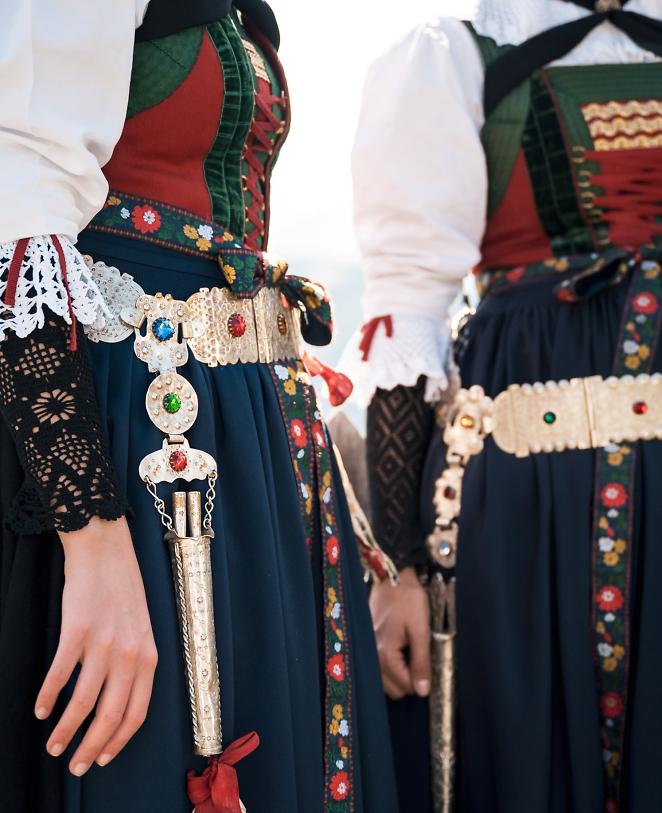- Home
- Ladin
- Books & tales
- Myths & legends
From the Fanes realm to King Laurin, legends of the Dolomites
Over the millennia, our giant rock castles have been the setting for Ladin mythology
The roots of Ladin and Dolomite legends trace back many thousands of years. There is the mythology of the “Fanes”, which recounts the rise and fall of the marmots' magical kingdom. And in “King Laurin and his Rose Garden”, it is revealed why the Dolomites glow reddish at dusk and dawn, “Enrosadira”. Then again, you will encounter the princesses Moltina and Dolasilla, the evil sorcerer Spina de Mul and the hero Ey de Net, as well as the “ganes” and the “salvans”, the people of the forests. Fascinating stories in which you can find ancient narrative elements, such as the transformation of humans into animals or the totem of the marmot as a symbol of peace and modesty. Elements, reviving to this day with inexplicable energy. As if, in spite of everything, humankind cannot leave past behind.
Stories of the Dolomites echoing ever since
The “Rëgn de Fanes”, realm of the greedy marmots, princesses Moltina and Dolasilla, evil sorcerer Spina de Mul and hero Ey de Net: From time immemorial, deep in the heart of the Dolomites, the Ladins have been passing down the memory of an age-old mountain empire, one that once was powerful and glorious yet then destroyed by betrayal.
The Dolomites and Alta Badia, from one legend to another
The “Kingdom of the Fanes” is the only Alpine-born saga which is vaguely comparable to great European myths, such as “The Matter of Britain” (the Arthurian cycle) or the Nibelungen cycles. Karl Felix Wolff collected and transcribed the Fanes legend towards the end of the 19th century which, analysed against the background of recent archaeological, historical and geological research, it allows us to identify specific references to the cultural landscape of the era of transition between the Bronze Age and Iron Age.
The Ladins and Alta Badia, a story to unfold page by page
From oral lore to the rise of a language that is not only spoken but also written. On account of 19th century luminaries such as Micurá de Rü and Jan Batista Alton, Val Badia's Ladin culture developed a narrative and poetic dimension that still lives on in all its splendour.













































